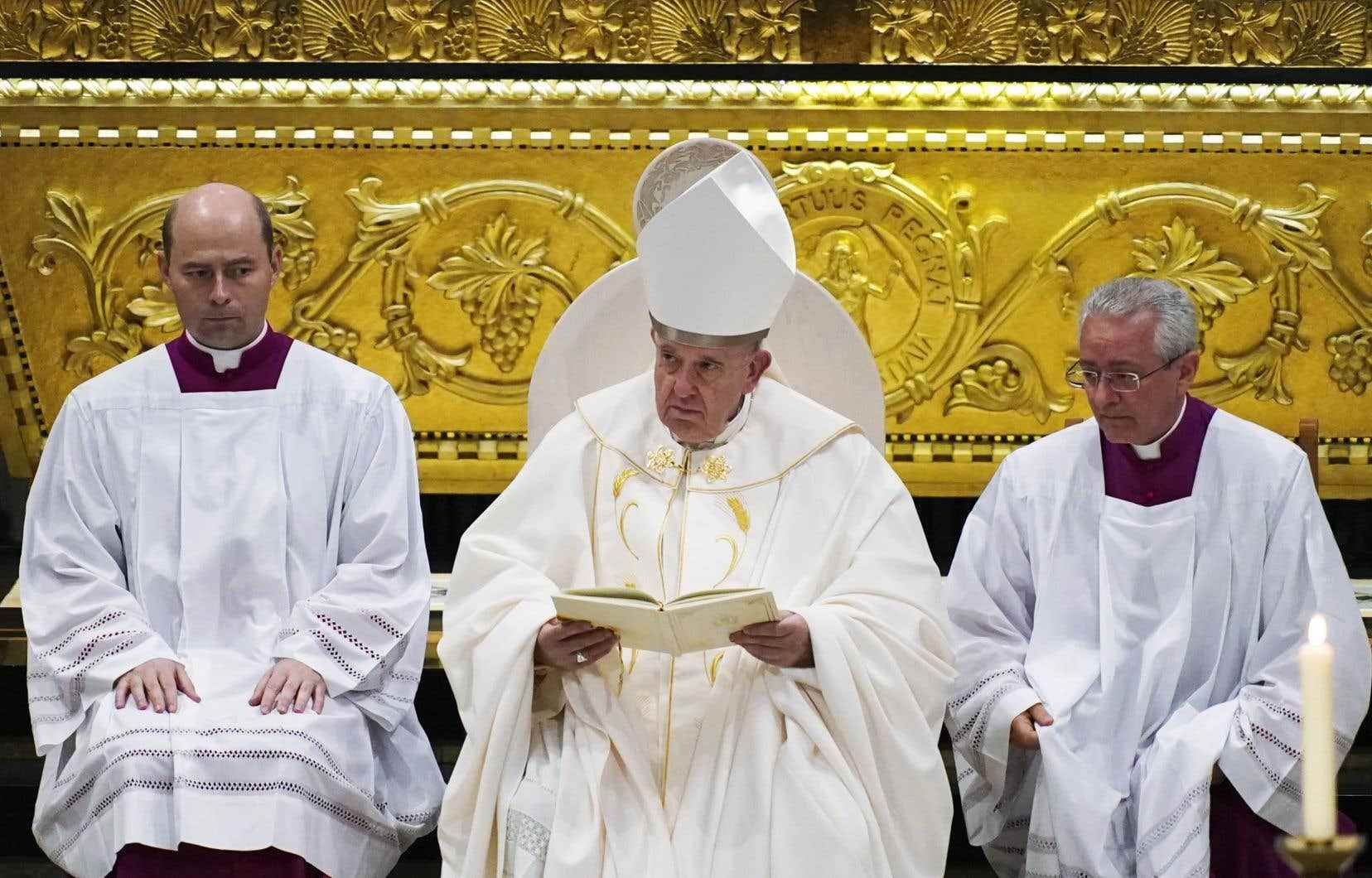It is on the theme of reconciliation and healing that Pope Francis delivered the homily on Thursday, during a mass presented at the sanctuary of Sainte-Anne-de-Beaupré.
The pope spoke of the disciples’ journey to Emmaus, at the end of Saint Luke’s Gospel, and the guilt they felt after the death of Jesus.
The pontiff indicated that we could ask ourselves questions, ask ourselves “what happened? Why did this happen? How could this have happened? »
“These are the questions each of us asks ourselves; and these are also the burning questions that this pilgrim Church in Canada resounds in his heart on a trying journey of healing and reconciliation”, he declared in his mother tongue, Spanish, after speaking a few words in French to open the mass.
“We too, faced with the scandal of evil and the wounded Body of Christ in the flesh of our native brethren, are steeped in bitterness and we feel the weight of failure. »
We must however be attentive to the temptation to flee, he added, “to flee from the place where the facts occurred, to try to remove them, to seek a ‘quiet place’ like Emmaus to forget about them “.
Believing that failure is final is the enemy of the spiritual journey, he said, and this thought can paralyze us in bitterness and sadness, convince us that there is nothing more to do. and that it is therefore not worth finding a way to start over.
The way of Jesus, he concluded, is the only path to healing.
“Let his Word interpret the history that we live as individuals and as a community and show us the way to heal and to reconcile us”, to then “become instruments of reconciliation and peace in the society in which we live”.
Several hundred people, mostly Aboriginal people, were outside the site in the early morning. Equipped with folding chairs and coolers in anticipation of long hours of waiting before the arrival of the Holy Father, most of the faithful got up very early to attend this event.
Anna Hervieux, Innu from Pessamit, on the North Shore, was in a state of excitement at the coming of the sovereign pontiff.
“I slept barely four hours, normally I sleep almost a good 11 hours. I’m really feverish. I never felt like this. I can’t wait to see it, ”said Ms. Hervieux, who lives in Quebec.
Some attendees are accompanying loved ones of residential school survivors who attend the event inside the sanctuary.
Prime Minister François Legault stressed, upon his arrival at the sanctuary, that many of Quebec’s “beautiful values” came from the Catholic religion.
“The Catholic religion has brought many good things to Quebec,” he said, adding, however, that the Church’s heritage was not only positive.
“Unfortunately, we have the situation of the residential schools. When you think about that, it’s unacceptable, it doesn’t make sense that during a dark period in our history children were taken from aboriginal families to be sent to residential schools. »
Mr. Legault indicated that he had a private meeting scheduled with the pontiff on Friday, and that he would take the opportunity to ask him to hand over to the indigenous communities any material or document related to the residential schools.
For his part, Prime Minister Justin Trudeau said it was good that the highest representative of the Catholic Church was in Canada to apologize and work for reconciliation.
He expects the pope to repeat the apologies he has already made since the beginning of his stay, but also to hear him talk about the work that remains to be done “to recognize humanity and defend culture. , the identity of everyone, and especially of Aboriginal communities”.
The site is one of the oldest and most popular pilgrimage sites in North America and attracts over one million visitors each year.
Organizers expect more than 16,000 people to attend, although attendance at events in Alberta has been overstated.
Later in the day, the Pope will attend Vespers with representatives of the Church in the Cathedral-Basilica of Notre-Dame de Québec.
Pope Francis arrived in the city for two days of events on Wednesday.
Speaking at the Citadel of Quebec, the pope asked forgiveness for the harm caused by the assimilation policies carried out in the residential schools.
The pope visited the historic site for private meetings with Governor General Mary Simon and Prime Minister Justin Trudeau.
Later, he addressed a small room of Aboriginal dignitaries and residential school survivors.
The pontiff expressed his deep shame and sadness for the role played by different local Catholic institutions in the residential school system.
This is the second papal apology on Canadian soil for Pope Francis, who is halfway through his tour.
On Monday, he asked forgiveness for the “evil done by so many Christians against Indigenous peoples” during a speech in Maskwacis, Alberta.
He is due to make a brief stopover in Iqaluit on Friday before returning to Vatican City.
